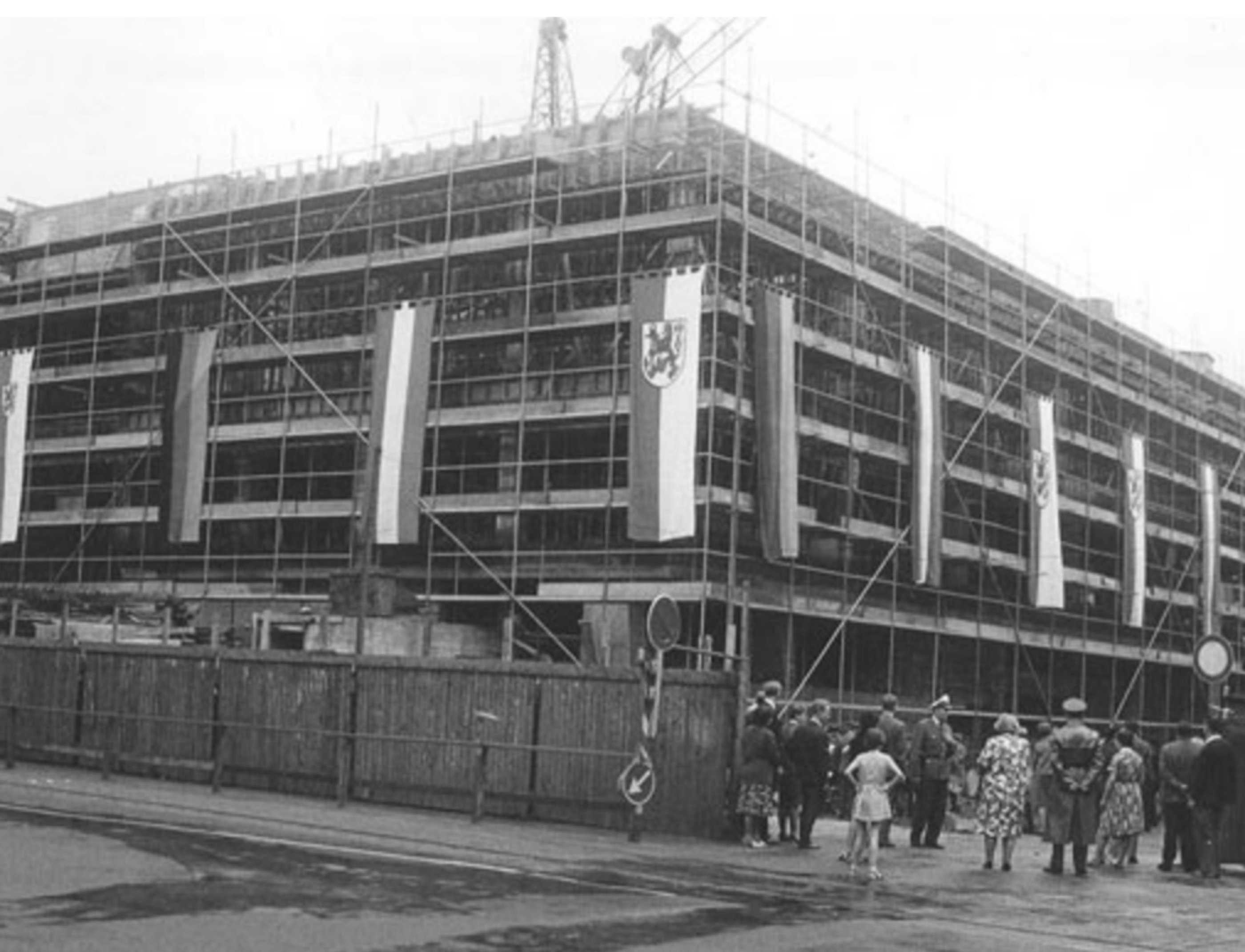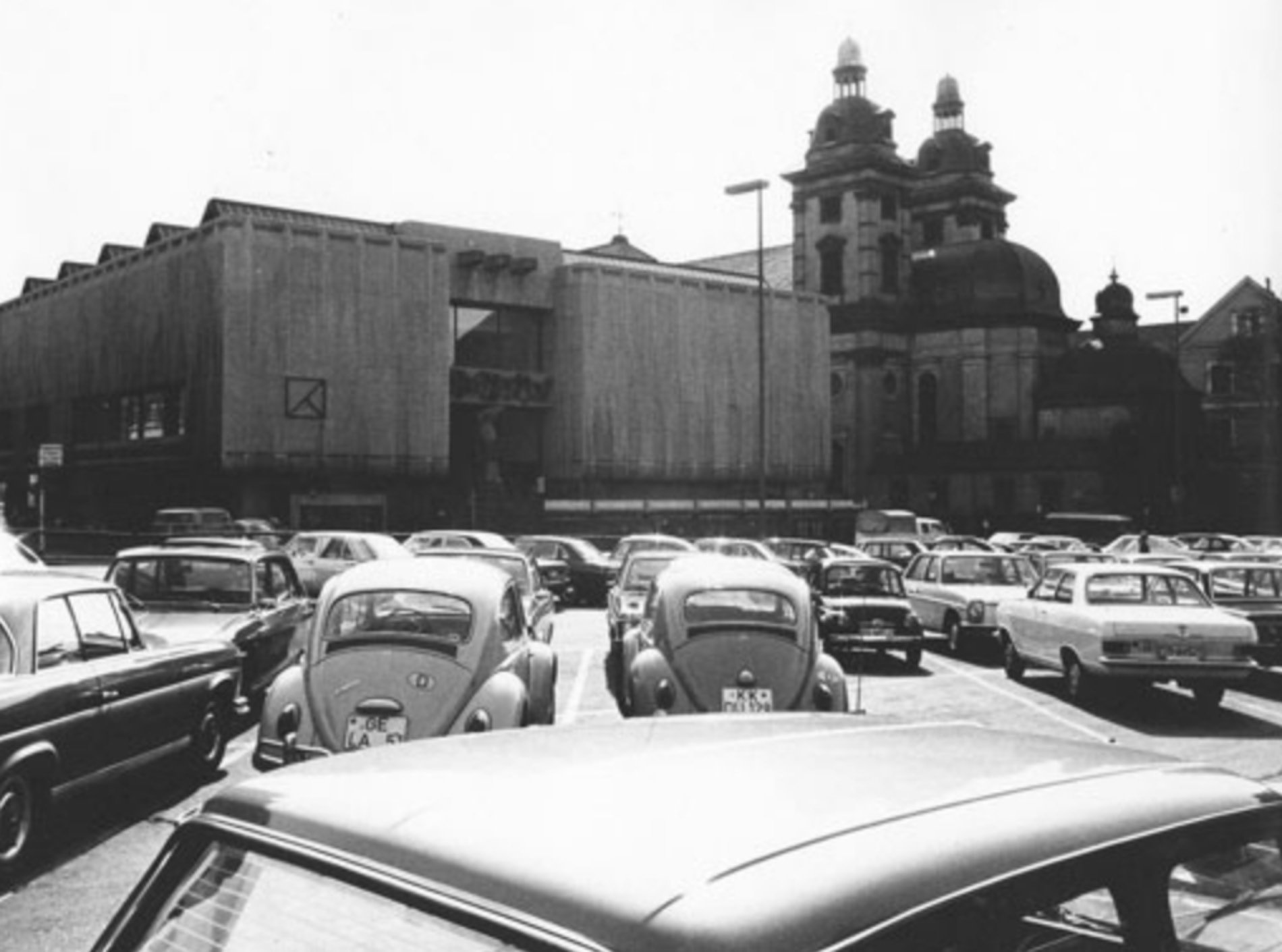History of the
Kunsthalle Düsseldorf

The Kunsthalle, a concrete block built in 1967, is one of the most concise buildings in Düsseldorf, a now rare example of raw architecture. Architects Beckmann and Brockes used prefabricated blocks of concrete, developed in the 1950s for purely economic reasons, and thus were faced with more than just a formal challenge. This is the background against which the Kunsthalle’s architecture must be regarded today.
Ever since the building on the Grabbeplatz opened, it has housed two independent institutions, the Kunsthalle and the Kunstverein für die Rheinlande und Westfalen. Not merely externally different from all of the other museums in Düsseldorf, the Kunsthalle’s conceptual direction is also distinct. Hosting an array of exhibitions, but without its own collection, contemporary art movements and positions, as well as their historical and local points of reference, were crucial to the Kunsthalle’s program from the start. Pioneering shows were seen here, such as the series of “Prospect” exhibitions between 1968 and 1976, and so a number of international artists entered the European art market through the Düsseldorf Kunsthalle. It is the Kunsthalle’s job to stimulate discussions and explorations of today’s art, in its immediacy as well as in the context of current developments – meaning, a kind of art that is articulate, that enters into social discourse. Mediating contemporary art, revealing its roots and its continuity within the artistic discourse is of central importance.
At the end of the 1990s, Düsseldorf artists and citizens were successful in their efforts to retain the Kunsthalle. The building was temporarily closed for extensive renovation and modernization, which was carried out by the architectural team from rheinflügel. It has been open to visitors again since July 2002. Visitors are captivated by the inside of the building, thanks to its simple arrangement and the generous dimensions of its galleries. After renovation, the characteristics of these rooms were emphasized and optimized for presenting art. Discordant surfaces and technical additions were removed from floors, walls, and ceilings in favor of a new, technical equipment. The new lighting concept underscores the proportions of the rooms, and the façade of the entrance and the foyer zone, which extends from the ground floor to the second floor, fulfill the tasks of reception and orientation, as was foreseen in the original 1967 concept. The presence and form of the cashier’s desk, bookshop, bar, and information desk have been designed to echo the cubist architecture of the Kunsthalle.
The Kunsthalle Düsseldorf is a place for the entire spectrum of international contemporary art and related contemporary discourses. This tradition has continued since its reopening in 2002 with innovative formats for exhibiting and communicating.
The wide range of exhibitions focusing on a variety of topics and periods, such as Zurück zum Beton: Die Anfänge von Punk und New Wave in Deutschland 1977–’82, Ready to Shoot: Fernsehgalerie Gerry Schum, videogalerie schum (2003), Palermo (2007), Sonic Youth etc.: Sensational Fix (2009), Eating the Universe: Food in Art (2009–10), Hans-Peter Feldmann: Art Exhibition (2010), and KRIWET: Yester ’n’ Today (2011), have been greeted with enthusiasm by the public. Furthermore, the exhibition series Seitenlichtsaal and the presentation of recipients of the Karl Schmidt-Rottluff Scholarship have featured and continue to showcase younger and less well-known artists.
Since January 2010, Gregor Jansen has been director of the Kunsthalle Düsseldorf. Under his direction, international currents and Düsseldorf positions, new talents and “big” names will continue to find their place in this out-of-the-ordinary venue.








